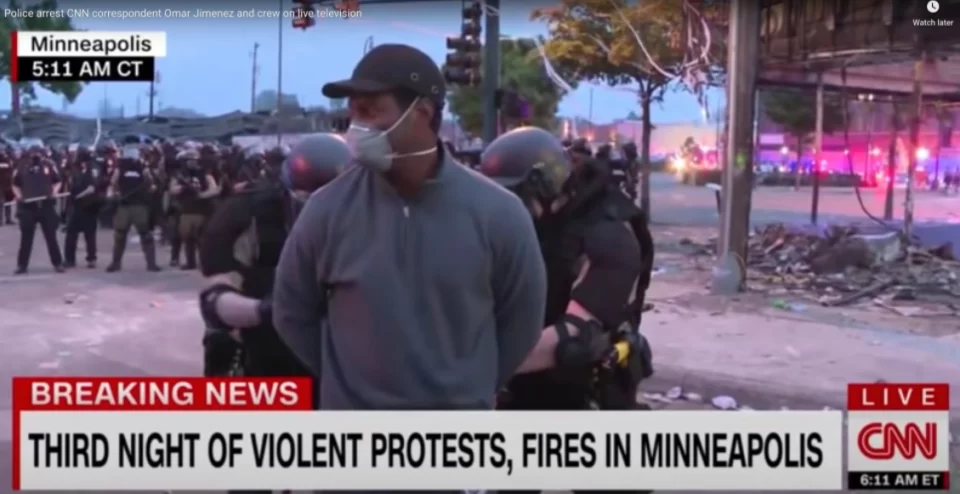More Fallout From Police Response to Floyd Protests
Killings by Police Keep Black People Up at Night
2 Black Students No Longer Charged Over Parody
Unnamed Staffers at CNN Decry Pro-Israel Bias
Press Groups Say L.A. Is Trying to Blame Reporters
Diversity Advocates Play Defense as Attacks Rise
After Layoffs at Wall St. Journal in D.C., 14 Openings
Survey Finds Slippage in Viewpoint, Age Diversity
Pulitzer Winner Couldn’t Do U.S.-Style Journalism in Nigeria
Short Takes: Edward Enninful and British Vogue; San Francisco Chronicle; Jaime Cardenas; students buy two weeklies; Alfredo Carbajal; two win $100,000 prizes; Sports Journalism Institute; Byron Allen and McDonald’s; Vivian Toy; “Beyond the World and Me” in S.C. classroom; Alturo Rhymes; Jerry McCormick and depression; fears in El Salvador, Kenya; attacks on media in Senegal.
Homepage photo: Minnesota state police arrest CNN reporter Omar Jimenez on live TV on May 29, 2020. He and his crew were released after about an hour in custody. (Credit: CNN)
Support Journal-isms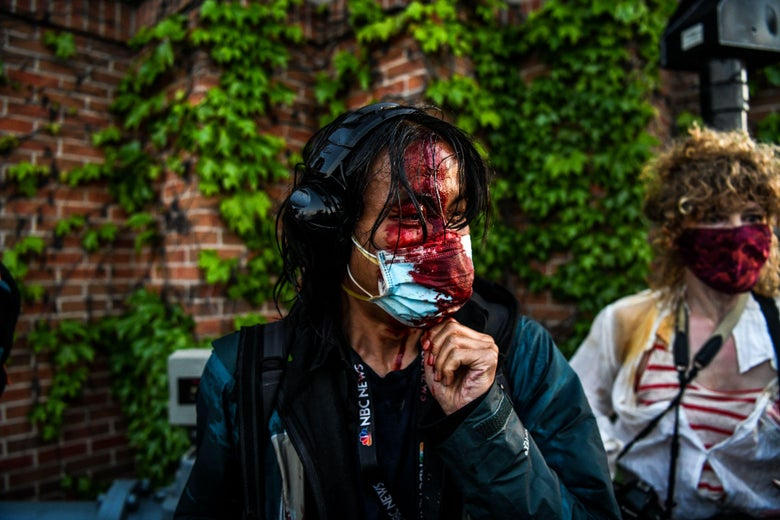
More Fallout From Police Response to Floyd Protests
“The city of Minneapolis agreed Thursday to pay $950,000 to settle a lawsuit alleging that journalists were subjected to police harassment and even hurt while covering protests over the police killings of George Floyd,” Heather Hollingsworth reported for the Associated Press.
“The suit, brought by the American Civil Liberties Union of Minnesota and pro bono attorneys, was one of several filed against law enforcement for alleged constitutional violations involving the use of force in 2020. Several journalists reported being struck by less-lethal munitions and being herded and detained while covering protests.”
The journalists had already partially settled their lawsuit in February 2022, making an $825,000 agreement with the Minnesota State Patrol that included reforms to protect journalists, according to Max Nesterak, writing in September for the Minnesota Reformer.
The lead plaintiff, Twin Cities-based reporter Jared Goyette, “was documenting the efforts of protesters to shield and protect a seriously injured young Black man when police fired a projectile at Goyette’s face, hitting his eye and nose,” Dana Thiede reported for KARE-TV.” Goyette said he was then teargassed.
Goyette, a freelance journalist who is now reporting in Ukraine and Croatia, was covering the protests for The Washington Post and the Guardian.
Hollingsworth continued, “More protests erupted after Daunte Wright, a 20-year-old Black man, was shot and killed by an officer in Brooklyn Center in April 2021. During the demonstrations, some officers could be seen spraying a chemical on protesters. And the ACLU added the Hennepin County Sheriff’s Office to the suit then. . . .”
The Minneapolis City Council’s 13-0 vote Thursday to settle the case was just the latest challenging police abuse of journalists in the wake of the Floyd killing.
“The former head of the Minneapolis police union, Bob Kroll, will not be allowed to serve as a police officer in three Minnesota counties for the next decade as part of a settlement last year,” Hollingsworth wrote. Kroll retired in January 2021.
“And the state of Minnesota agreed in 2022 to pay $825,000 and change several policies to settle its part in the lawsuit. That deal also prohibits the Minnesota State Patrol from attacking journalists, arresting or threatening to arrest them, ordering them to disperse, seizing their equipment and more.”
Elsewhere, quoting PetaPixel.com, a publication for photographers, Journal-isms reported in September that, “A group of press photographers reached a historical settlement with the New York City Police Department Tuesday, with an agreement that has the potential to transform police conduct and training, especially regarding the First Amendment for both journalists and the general public.”
Maria Cramer wrote for The New York Times. “In the agreement, the NYPD also — for the first time ever — formally acknowledges that the press has a clearly established First Amendment right to record police activity in public places, and commits itself to respect that right,” the National Press Photographers Association said. “No press pass or other form of identification is needed to exercise this right.”
The Justice Department last year “issued a withering critique of Minneapolis police, alleging that they systematically discriminated against racial minorities, violated constitutional rights and disregarded the safety of people in custody for years before George Floyd was killed,” as the Associated Press reported. It also found civil rights violations by the Louisville, Ky., police and is due any day to release a report on Phoenix law enforcement.
According to the US Press Freedom Tracker, 129 journalists were arrested or detained while covering the protests during 2020, and hundreds more were attacked or assaulted by police, in some cases resulting in serious injuries, Joel Simon, former director of the Committee to Protect Journalists, wrote for Columbia Journalism Review.
“One of the most notorious episodes occurred on May 30, 2020, the day after CNN correspondent Omar Jimenez was arrested on live television,” Simon wrote. “That evening, as police in Minneapolis enforced a citywide curfew, they swept through a group of about two dozen journalists who were standing apart from protesters, wearing credentials and carrying professional camera equipment. Police attacked them using less lethal munitions, including pepper spray, and shoved several who tried to escape the onslaught over a six-foot retaining wall.
“Ed Ou, a Canadian war photographer who had moved to the US because he wanted to work in a country where the rights of journalists are respected, was hit in the face with what he believes was a flash-bang grenade; he was seriously injured. Ou later told me that because of the violence and suddenness of the police response in Minneapolis, ‘my radar for what’s safe has been completely fried.’ “
Ou, who was freelancing for the Washington Post, joined the suit, which was first brought by Goyette. Others who joined were news photographer Craig Lassig; photojournalists Tannen Maury, Stephen Maturen, Tim Evans and Chris Tuite; and Katie Nelson, a journalist, photographer and videographer, Paul Walsh reported for the Star Tribune.
“This is a major victory for journalists covering protests in the United States of America,” said NewsGuild-CWA President Jon Schleuss. “We joined this lawsuit to support America’s journalists, who were brutally attacked by police while doing their job. We are proud to support and fight for journalists defending a free press in our democracy.”
- Journal-isms: Justice Dept. Calls Out Police Abuse of the Press (June 17)
- Journal-isms: Feds Targeted Black Reporter, Author Says (Oct. 21)
- Robin Levinson-King, BBC: Canadian reporter Ed Ou barred from entering US (Dec. 3, 2016)
- Kelly McBride, Poynter Institute: Better relationships with cops won’t help journalists cover crime
- Joel Simon, Committee to Protect Journalists: How we’re failing to cover the cops

Killings by Police Keep Black People Up at Night
“At the height of the COVID-19 pandemic, the US was galvanized by the public murder of George Floyd at the hands of police officers,” the Journal of the American Medical Association observed in an editor’s note Monday. “This act of police violence caused a collective reckoning of the disproportionate harm to African American individuals, even when unarmed, by law enforcement in the United States.
“A thoughtful analysis” by Dr. Atheendar S. Venkataramani of the University of Pennsylvania, Philadelphia, and colleagues “shows how that harm reverberates in communities.
“Using a national sample, they looked at sleep disturbances associated with a police killing of an unarmed Black person in the same state where a respondent lived as well as the association with sleep of a nationally prominent police killing of an unarmed Black person anywhere in the US.
“For an in-state killing, they found that Black respondents had a statistically significant increase in short sleep 91 to 180 days after a killing. Similar patterns of sleep disturbance were not found among White respondents.
“Similarly, compared to White persons, Black respondents experienced a statistically significant increase in short sleep following the killing of an unarmed Black individual in the same state. Sleep disturbances are associated with poor chronic disease outcomes, often already experienced disproportionately by African American individuals compared to White individuals.
“This study shows how police violence against unarmed Black men can contribute to broad harms for African American individuals in the same state and, in some more prominent killings, the adverse effects reverberate nationally.”
A second study found racial disparities in injuries that occurred when Tasers and similar weapons were used by police to incapacitate people, Carla K. Johnson reported for the Associated Press.
- Emily Baumgaertner, New York Times: After Police Kill Unarmed Black People, Sleep Worsens — but Only for Black People
- Khadijah Edwards, Pew Research Center: Black Americans’ Views on Success in the U.S.
- Washington Blade: LGB people more likely to have sleep issues (May 11, 2018)
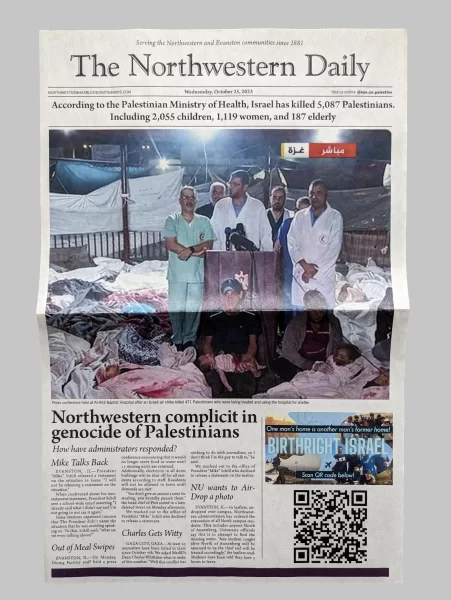
2 Black Students No Longer Charged Over Parody
The Cook County State’s Attorney’s Office dropped charges against two Black Northwestern University students who faced criminal misdemeanor charges “for distributing parodies of the university’s student-run paper critical of the university’s stance on the Israel-Hamas war,” Mohammad Samra reported Wednesday for the Chicago Sun-Times.
“The fake front page was wrapped around actual copies of the Daily Northwestern at a ‘dozen locations on campus’ last October, according to the Students Publishing Company, the publisher of the student-run paper.
“The page mocked University President Michael Schill’s refusal to take a stance on the war. The resulting criminal charges against the students sparked controversy this week. Dozens of organizations boycotted the Daily Northwestern, and the editorial board at the paper entertained the possibility of a walkout if nothing was done. . . .”
The Chicago Tribune listed the two students’ ages as 20 and 22 ,but news reports and public statements did not name the students, and the university’s communications office, to which inquiries were directed, did not respond to a request to identify them.
However, their race played a role in the attention given the case.
“The charging decision, as well as the newspaper’s parent company’s pursuit of a complaint, attracted harsh criticism from students, professors and community members, who blasted the move as an example of over-policing of Black students and an effort to silence pro-Palestinian voices that disproportionately affect people of color,” Madeline Buckley wrote Wednesday, updated Thursday, in the Tribune.
John Byrne, chair of the Students Publishing Company Board of Directors, parent company of the Daily Northwestern, said in a statement Tuesday, “The charge the two people face is misdemeanor-level ‘theft of advertising.’ They apparently weren’t arrested but instead received notice of the charge in the form of a written citation (like a ticket but worse).
“However, one citation apparently was delivered in person by uniformed police, which we’re sure was an unpleasant, if not downright frightful, experience. For someone convicted of theft of advertising, the penalties can be as harsh as some jail time, a substantial fine (for a student), or both. It also can mean a permanent mark on someone’s ‘record’ that follows them for many years, if not forever. Illinois allows for expungement of records for these types of crimes after a certain amount of time, but there’s no guarantee.
“It’s only been in the last four days that we learned more information about the people charged: that they are students; that they are Black. Some may disagree, but these facts matter to us.”
According to Responsible Statecraft, online magazine of the Quincy Institute for Responsible Statecraft, the Students Publishing Company board includes several prominent journalists and media executives, including longtime ESPN personality J.A. Adande, now director of sports journalism at Northwestern; CNN legal director Steve Kiehl and Pulitzer Prize-winning journalist Robert Samuels, who is returning Monday to the Washington Post. All three are Northwestern alumni.
A petition from Change.org also highlighted race. “We are watching the targeted over-policing of Black students at this University continue without accountability, it said.
The Daily Northwestern itself editorialized, “Our University and community — along with the American policing and justice system as a whole — has a long history of placing people of color in harm’s way. As a publication that strives to unearth these injustices through our reporting, we remain wholeheartedly opposed to any course of action that would entwine our publication with this harmful legacy.
“We hope this situation invites reflection about the impacts that people, particularly people of color, may face as a result of decisions that involve the police. Making a call or filing a complaint demands extraordinary thought and consideration beyond an action’s legality.”
The conservative National Review headlined, “Daily Northwestern Publishing Company Pushes against Punishment for Newspaper Tamperers, Citing Race.”
“Black skin privilege,” commented one reader.
As Israeli forces rained bombs around them, a group of Palestinian journalists in Gaza gathered for what turned out to be an emotional yet inspiring moment to sing together. (Credit: the New Arab/YouTube)
Unnamed Staffers at CNN Decry Pro-Israel Bias
“CNN is facing a backlash from its own staff over editorial policies they say have led to a regurgitation of Israeli propaganda and the censoring of Palestinian perspectives in the network’s coverage of the war in Gaza,” Chris McGreal reported Feb. 4 for the Guardian.
“Journalists in CNN newsrooms in the US and overseas say broadcasts have been skewed by management edicts and a story-approval process that has resulted in highly partial coverage of the Hamas massacre on 7 October and Israel’s retaliatory attack on Gaza.
“ ‘The majority of news since the war began, regardless of how accurate the initial reporting, has been skewed by a systemic and institutional bias within the network toward Israel,’ said one CNN staffer. ‘Ultimately, CNN’s coverage of the Israel-Gaza war amounts to journalistic malpractice.’
“According to accounts from six CNN staffers in multiple newsrooms, and more than a dozen internal memos and emails obtained by the Guardian, daily news decisions are shaped by a flow of directives from the CNN headquarters in Atlanta that have set strict guidelines on coverage.
“They include tight restrictions on quoting Hamas and reporting other Palestinian perspectives while Israel government statements are taken at face value. In addition, every story on the conflict must be cleared by the Jerusalem bureau before broadcast or publication.
“CNN journalists say the tone of coverage is set at the top by its new editor-in-chief and CEO, Mark Thompson, who took up his post two days after the 7 October Hamas attack. . . .”
In a similar Jan. 4 story by Daniel Boguslaw in The Intercept, a CNN spokesperson said via email:
“The policy of running stories about Israel or the Palestinians past the Jerusalem bureau has been in place for years. . . . It is simply down to the fact that there are many unique and complex local nuances that warrant extra scrutiny to make sure our reporting is as precise and accurate as possible.”
That story continued, “The spokesperson added that the protocol ‘has no impact on our (minimal) interactions with the Israeli Military Censor — and we do not share copy with them (or any government body) in advance. We will seek comment from Israeli and other relevant officials before publishing stories, but this is just good journalistic practice.”
Meanwhile, preliminary investigations by the Committee to Protect Journalists show that as of Saturday, “at least 85 journalists and media workers were among the more than 28,000 killed since the war began on October 7 — with more than 27,000 Palestinian deaths in Gaza and the West Bank and 1,200 deaths in Israel.”
Reporters Without Borders said Wednesday, “The toll of four months of war in Gaza on journalism is nothing short of horrifying: Palestinian journalists killed, wounded, and prevented from working without any possibility of safe refuge. Reporters Without Borders (RSF) strongly condemns the eradication of journalism and the right to information in Gaza by the Israeli army, and calls on States and international organisations to increase pressure on Israel to immediately cease this carnage. . . .”
- Najlaa Alskafi, International Press Institute: Amid airstrikes and comms blackouts, Palestinian journalists risk their lives to tell the story of war
- Joey Cappelletti, Associated Press: Opinion piece about Detroit suburb is ‘racist and Islamophobic,’ Democrats say
- Artemis Moshtaghian and Michelle Watson, CNN: Mayor says police presence increased at places of worship after WSJ opinion piece declared his city ‘America’s Jihad capital’ (Feb. 4)
- Terry Tang and Linley Sanders, Associated Press: Half of Asian Americans and Pacific Islanders want more US support of Palestinians, a poll shows
Press Groups Say L.A. Is Trying to Blame Reporters
“In an increasingly tangled legal battle over the publication of LAPD officers’ photos on a police watchdog website last year, the city of Los Angeles has taken new legal action against the journalist and activist group that obtained the images through a public records request,” Libor Jany reported Feb. 1 for the Los Angeles Times.
“The move follows several hundred city police officers’ suing the city in a case that seeks damages for the ‘negligent, improper and malicious’ release of the photos, which totaled more than 9,300 images, including some officers said to work undercover.
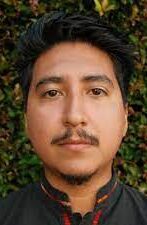 “Now, the city is pointing blame at Ben Camacho (pictured), a reporter with Knock LA who published the photos with the help of the Stop LAPD Spying Coalition, a group that advocates for the abolition of police. Attorneys for the city argue that Camacho and the group ultimately share financial liability for any problems caused by making the images public.
“Now, the city is pointing blame at Ben Camacho (pictured), a reporter with Knock LA who published the photos with the help of the Stop LAPD Spying Coalition, a group that advocates for the abolition of police. Attorneys for the city argue that Camacho and the group ultimately share financial liability for any problems caused by making the images public.
In a response Friday, media associations said, “In other words, the blame for releasing the photos — and the associated financial burden — is being shifted to include a journalist for doing their job reporting on the criminal justice system.
“This blatant attack on the First Amendment could limit speech and journalistic work, and moreover, punish reporters personally. This could also set a dangerous precedent making not only journalists, but ANY citizen, financially liable for receiving public records that the city itself vetted and chose to release. This chills everyone’s constitutional rights and harms the public’s ability to know how their own government is operating.”
Signing the statement were the board of the Asian American Journalists Association, Los Angeles; CCNMA: Latino Journalists of California; Los Angeles Press Club; Media Guild of the West, NewsGuild-CWA Local 39213; board of the National Association of Hispanic Journalists; Radio Television Digital News Association; Society of Professional Journalists, Los Angeles; Society of Professional Journalists, National; and Joey Scott, IWW [Industrial Workers of the World]-Freelancer Journalist Union.
- Ben Camacho and Jayrol San Jose, Poynter Institute: At police lines, not all journalists are created equal (Sept. 29, 2021)
- Emily Holshouser and Ruby Gonzales, Los Angeles Daily News: Journalist asks court to dismiss lawsuit over released LAPD public record (April 18, 2023, updated April 19)

Diversity Advocates Play Defense as Attacks Rise
“Foundations and major donors aren’t just watching court cases like the Supreme Court’s June decision ending affirmative action at universities, the ongoing lawsuit against a grant program aimed at supporting Black women entrepreneurs, and other legal challenges targeting corporate diversity programs,” Thalia Beaty wrote Thursday for the Associated Press.
“They are mobilizing to respond.
“Some nonprofits are financially supporting the lawsuits driving these cases. Others are calling for larger foundations to help grantees if they are sued or are offering legal assistance themselves. Leaders of nonprofits on both sides of the issue say that will intensify this year, even as some groups change the way they describe their work to try to sidestep the controversy. . . .”
Separately, “An unofficial coalition of civil rights, political and advocacy groups [is] launching a multifaceted counter to the growing cries to dismantle diversity, equity and inclusion efforts stoked by billionaires like Elon Musk and Bill Ackman, among others,” Curtis Bunn reported Thursday for NBC News.
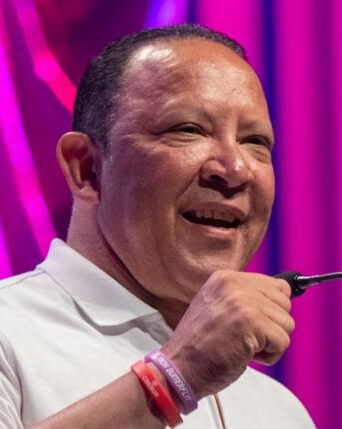 “The quests to abolish DEI ‘are a literal slap in our face,’ Marc H. Morial (pictured), president of the National Urban League, told NBC News. ‘We’re up against an effort to contort and misrepresent what DEI really means.’ ”
“The quests to abolish DEI ‘are a literal slap in our face,’ Marc H. Morial (pictured), president of the National Urban League, told NBC News. ‘We’re up against an effort to contort and misrepresent what DEI really means.’ ”
“Morial said Black organization leaders like himself began contacting one another in recent weeks, as the attacks on DEI began to gain momentum. Out of those communications came a commitment to create or increase existing efforts to support diversity, equity and inclusion. . . . “
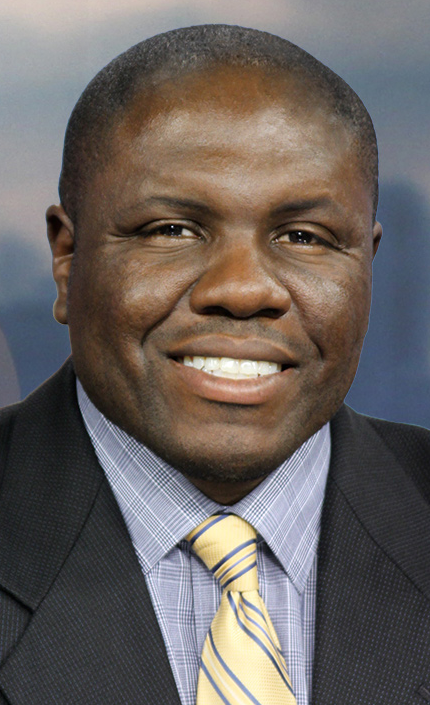 In the journalism world, Ken Lemon (pictured), president of the National Association of Black Journalists, told the NABJ board of directors Feb. 3 that he was creating a “diversity audit,” in which NABJ members could report, even anonymously, “anything that limits Black folks.” He said NPR television critic Eric Deggans and Madison Carter, anchor and investigative journalist at WSOC-TV in Charlotte, N.C., would do the monitoring, though the effort does not seem to be much beyond an idea. Carter is NABJ secretary.
In the journalism world, Ken Lemon (pictured), president of the National Association of Black Journalists, told the NABJ board of directors Feb. 3 that he was creating a “diversity audit,” in which NABJ members could report, even anonymously, “anything that limits Black folks.” He said NPR television critic Eric Deggans and Madison Carter, anchor and investigative journalist at WSOC-TV in Charlotte, N.C., would do the monitoring, though the effort does not seem to be much beyond an idea. Carter is NABJ secretary.
Sara Guaglione of Digiday, who annually monitors publishers’ diversity efforts in the news business, wrote at the end of 2023, “Company restructurings, layoffs, hiring freezes and other budget constraints appear to have slowed down the rate of improvements to diversify publishers’ workforces this year, with the data showing smaller changes year over year.
“However, that doesn’t mean there hasn’t been any progress since 2020. As the charts below show, there have been notable improvements, with media businesses slowly becoming less white and male-dominated over the past four years. . . .”
The News Leaders Association, the leading journalism organization for news editors and whose predecessor group for more than four decades monitored diversity progress at newspapers through its annual survey, confirmed in December that it plans to dissolve by June. While it has found homes for some aspects of its work, it has not announced one for its diversity survey.
Meanwhile, a white male journalist’s proposed class-action suit filed in August against the Gannett Co. continues in the U.S. District Court for the Eastern District of Virginia.
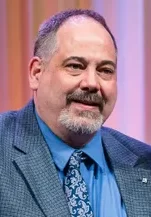 The journalist, Steven Bradley, argues that he and others were passed over in favor of journalists of color so that Gannett could implement its DEI goals. In 2020, Gannett, the owner of USA Today and more than 260 local news operations, announced a broad initiative “to make its workforce as diverse as the country by 2025 and to expand the number of journalists focused on covering issues related to race and identity, social justice and equality.”
The journalist, Steven Bradley, argues that he and others were passed over in favor of journalists of color so that Gannett could implement its DEI goals. In 2020, Gannett, the owner of USA Today and more than 260 local news operations, announced a broad initiative “to make its workforce as diverse as the country by 2025 and to expand the number of journalists focused on covering issues related to race and identity, social justice and equality.”
Also in 2020, Cesar Conde, beginning that year as head of news at NBC Universal, publicly set a goal of a staff that is 50 percent people of color and 50 percent women, although he gave no deadline.
And the next year, Daisy Veerasingham, then-incoming president and CEO of the Associated Press, and the first woman and person of color to hold the position, declared that “I want 50 percent of hiring and promotions (to be) people of color.”
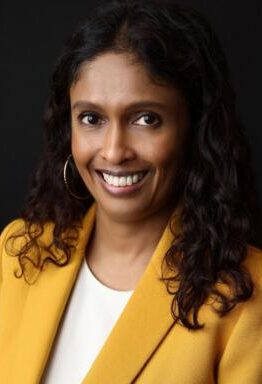 On Monday, Ron Nixon, vice president for news, investigative, enterprise, and grants and partnerships, announced that two women of color, Mary Rajkumar (pictured) and Jeannie Ohm will “co-lead AP’s award-winning investigative team and work across the organization to develop and produce in-depth investigative projects.”
On Monday, Ron Nixon, vice president for news, investigative, enterprise, and grants and partnerships, announced that two women of color, Mary Rajkumar (pictured) and Jeannie Ohm will “co-lead AP’s award-winning investigative team and work across the organization to develop and produce in-depth investigative projects.”
Writing about the litigation against Gannett, Taylor Telford pointed out in The Washington Post, “The case is among the first to test the legality of corporate diversity practices in the wake of a June Supreme Court ruling that struck down affirmative action in college admissions. That decision has sparked a wave of litigation aimed at racial considerations in the workplace, including claims that corporate efforts to increase diversity have disadvantaged White employees.” This column urged other news organizations to support Gannett in the case.
As some look toward start-ups as a viable path to news media diversity, Press Forward, a national initiative to inject $500 million into local journalism nationwide, is being pressed by the diversity-focused journalism organizations and others “to ensure equitable distribution of resources so underrepresented voices in local news are heard and supported.”
Jim Brady, the Knight Foundation’s vice president of journalism, responded, “We deeply value diversity within news ecosystems, recognizing that it is required for the optimal functioning of democracy. Knight’s grantmaking has shown that commitment to diversity, which will absolutely continue with Press Forward.”
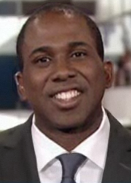 Writing in The Washington Post, Perry Bacon Jr. (pictured) challenged the notion that diversity itself is enough of a goal. “Here’s the problem: Individuals, whatever their identity, usually don’t change powerful, established institutions, for several reasons. First of all, the minorities and women tapped to join such institutions are often chosen because they have signaled that they won’t disrupt the status quo too much. . . .
Writing in The Washington Post, Perry Bacon Jr. (pictured) challenged the notion that diversity itself is enough of a goal. “Here’s the problem: Individuals, whatever their identity, usually don’t change powerful, established institutions, for several reasons. First of all, the minorities and women tapped to join such institutions are often chosen because they have signaled that they won’t disrupt the status quo too much. . . .
“Second, even minorities and women who favor more progressive change are caught in a bind: Challenging the values of the institutions they are a part of would likely reduce their ability to advance, or even remain in their current roles. . . .”
- Zeeshan Aleem, MSNBC: The anti-DEI movement is going frighteningly well in red states. Antiracism in higher education is under siege across red America. (Feb. 2)
- Charles M. Blow, New York Times: The Dawn of a New Era of Oppression (Jan. 31)
- Elizabeth Dwoskin, Washington Post: How a liberal billionaire became America’s leading anti-DEI crusader
- Michael Goldberg, Associated Press: Republican lawmakers are backing dozens of bills targeting diversity efforts on campus and elsewhere
- Ben Hensley, Business Journal: Journalism Program Aimed at Diversity Receives $201K State Grant (Jan. 30)
- Rod Hicks, Society of Professional Journalists: Diversity programs under attack (Jan. 22)
- Julian Mark and Taylor Telford, Washington Post: Conservatives are suing law firms over diversity efforts. It’s working. As they fend off lawsuits targeting their own programs, law firms are creating task forces to guide clients through the challenges of DEI (Dec. 9)
- National Association of Black Journalists: NABJ Calls for Meeting with NFL After No Progress Seen in Media Hiring Practices
- Deon Snyder, theGrio: Yes, Roger Goodell, the NFL newsroom’s lack of Black journalists is still a big problem
After Layoffs at Wall St. Journal in D.C., 14 Openings
A restructuring of the Wall Street Journal Washington bureau that left the bureau bereft of Black journalists in its reporting ranks “means that there will be 14 new opportunities in Washington and beyond,” Journal editor in chief Emma Tucker wrote staff members Monday.
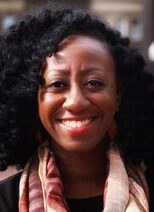 “Reporters in Washington who were given notice last week will have preference for some of these positions.” Laid off was Amara Omeokwe (pictured), the only Black reporter, though Josh Jamerson remains as East Coast bureau chief, an editing role.
“Reporters in Washington who were given notice last week will have preference for some of these positions.” Laid off was Amara Omeokwe (pictured), the only Black reporter, though Josh Jamerson remains as East Coast bureau chief, an editing role.
“Maybe an upside will be landing somewhere that isn’t so lonely,” Omeokwe wrote on X.
 Also laid off was Miguel Gonzalez (pictured), who edited the Journal’s Politics & Policy newsletter. “Prior to that, he was a news editor on the politics team in Washington,” Chris Roush wrote Feb. 3 for Talking Biz News. “Gonzalez worked for the Journal in Hong Kong for more than a decade, where he was transportation editor and senior editor overseeing the Asian Journal print edition.”
Also laid off was Miguel Gonzalez (pictured), who edited the Journal’s Politics & Policy newsletter. “Prior to that, he was a news editor on the politics team in Washington,” Chris Roush wrote Feb. 3 for Talking Biz News. “Gonzalez worked for the Journal in Hong Kong for more than a decade, where he was transportation editor and senior editor overseeing the Asian Journal print edition.”
Gonzalez wrote in a farewell message to colleagues, “The Journal has been my only professional home since I graduated from college, and I’m grateful for the opportunities it has provided — and on two continents, no less.
“When I landed an internship here, a college journalism professor told me to learn as much I could from every corner of the Journal newsroom, because this place had the most talented people in the field. His advice still rings true. Thank you all so much.”
Politico reported these layoffs Feb. 2, “according to several of the employees and departure emails“ (scroll down): Brody Mullins, Jeanne Cummings, Ted Mann, Julie Bykowicz, Ryan Tracy, John McKinnon, Yuka Hayashi, Gabe Rubin, Nell Henderson, Amara Omeokwe, David Harrison, Daniel Nasaw, Emily Stephenson, Eric Morath, Mark Anderson, Miguel Gonzalez, Andrew Ackerman, Peter Wonacott, Austen Hufford, Kate O’Keeffe, Josh Zumbrun, Kristina Peterson, Harriet Torry, Jeffrey Sparshott, James Graff, Gwynn Guilford, Charles Hutzler and Troy McCullough.
- America’s Newspapers: Additional bipartisan support is expressed for Community News Act (Feb. 2)
- Joshua Benton, Nieman Lab: “Economic headwinds”? No, The Messenger’s flop is the result of one man’s blindness to his own bad ideas (Feb. 1)
- Joshua Benton, Nieman Lab: The Garrison Project wants to bridge the gap between national and local criminal justice reporting (Jan. 30)
- Dave Busiek, Substack: Station brings former journalists back to the newsroom [in Des Moines]
- Tyler Falk, Current: ‘Our Body Politic’ show goes on ‘temporary hiatus’ (Jan. 31)
- Conor Friedersdorf, The Atlantic: Readers Share the State of Their Local Journalism (Jan. 31)
- Ross A. Lincoln, The Wrap: At Least 528 News Media Jobs Were Lost in January, Study Finds (Feb. 1)
- Shawn McCreesh, New York: The Media Apocalypse: Condé Nast and other publishers stare into the abyss. (Jan. 26)
- Pivot Fund: Pivot Fund invests in Baltimore Beat
- Chris Quinn, cleveland.com: Letter from the Editor: Journalism going extinct? Not in Cleveland. Why our newsroom is healthy despite the doomsaying
- Jody Serrano and Mónica Marie Zorrilla, GoFundMe: Help ex-Messenger Employees Left Without Severance
- Martin Vassolo, Axios Miami: WLRN journalists laid off as “Sundial” show is canceled
- Aaron Zitner, Amara Omeokwe, Rachel Wolfe and Rachel Louise Ensign, Wall Street Journal: Why Americans Are So Down on a Strong Economy (final Journal piece by Omeokwe)
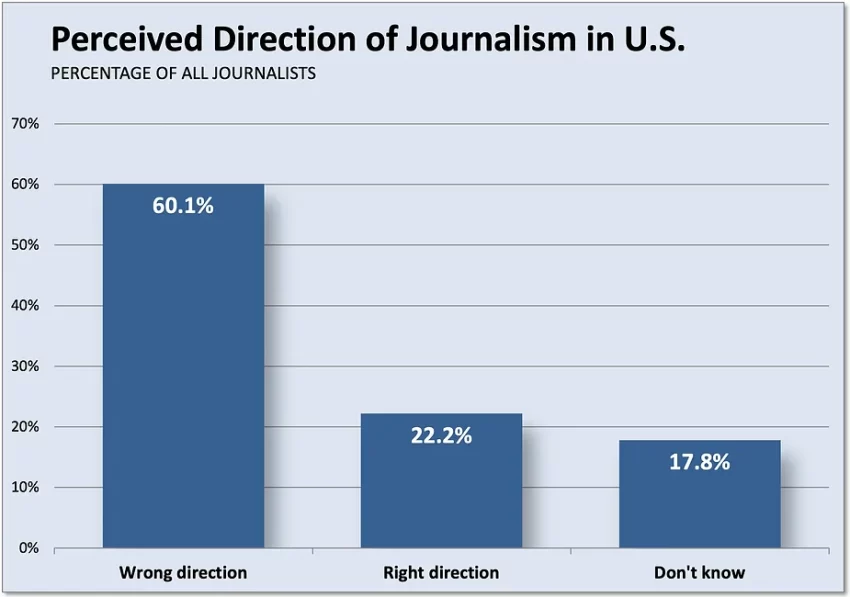
Survey Finds Slippage in Viewpoint, Age Diversity
“It is rare when university research has application in the real world,” Jeffrey M. McCall wrote Feb. 2 for The Hill. “But a highly relevant study out of Syracuse University should be mandatory reading for executives in the journalism industry, not to mention Americans who consume news. The research reveals blinking red lights on the dashboard of the news industry.
“The findings are based on what journalists themselves have to say about their profession. The researchers, led by Syracuse professor Lars Willnat, gathered survey data from 1,600 journalists across the country. The study builds on similar survey efforts going back to 1971.
“The result that seemed to draw the most attention was that only 3.4 percent of American journalists say they are Republicans, while 36.4 percent say they are Democrats. Fifty years ago, the percentage of Democrat journalists was about the same as now, but Republican journalists were at 25.7 percent. Right-leaning media outlets were quick to point out this imbalance.
“A political imbalance in American newsrooms is pretty much in the category of dog bites man these days; that is, it’s not really news. But it does raise the question of whether a wide range of perspectives can be found in the news agendas being paraded in front of news consumers.
“Fewer moderate or right-of-center working journalists also likely means search committees tend to leave out prospective hires who don’t share accepted newsroom views, further squeezing out the viewpoint diversity needed in media organizations. While cause-effect is difficult to establish, it is probably no coincidence that media credibility has noticeably declined as newsrooms have lost political balance. Audiences just can’t trust news outlets that are perceived as biased and ideologically unbalanced.
“The political disproportion of journalists, while noteworthy, is actually less ominous for the news profession than other results from the Syracuse research. For example, more than six in 10 journalists surveyed indicate that journalism is headed in the ‘wrong direction.’ The journalists themselves report concern for declining public trust and acknowledge that the public perceives bias in the media. Given the level of awareness of this problem in the profession, the question logically follows as to why professional reporters are allowing this apparent cancer to continue.
“Another warning light from the study is that the average age of professional journalists is now 47, quite a bit higher than the median age of the nation’s overall workforce, which is 42. . . .”
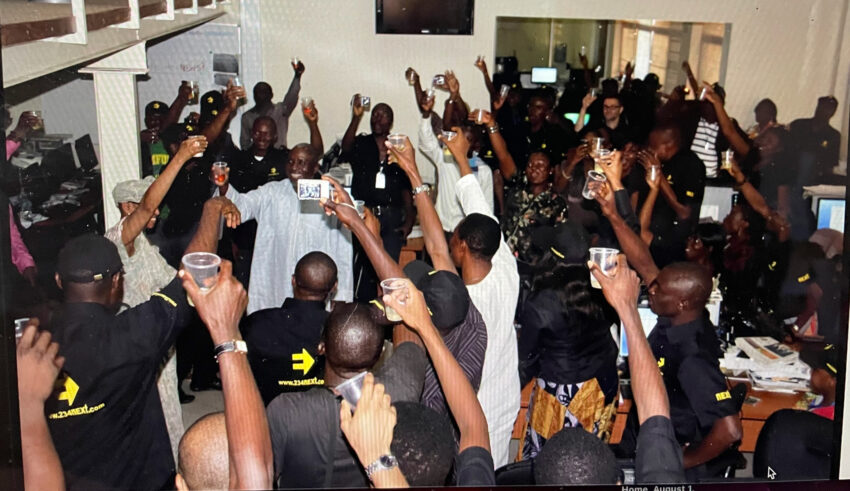
Pulitzer Winner Couldn’t Do U.S.-Style Journalism in Nigeria
“I was one of the editorial staff of NEXT, which launched in December 2008,” Nigerian journalist Adaobi Tricia Nwaubani (pictured, below) wrote Monday for Columbia Journalism Review. “The newspaper was founded by Dele Olojede, the first African-born winner of the Pulitzer Prize for International Journalism.
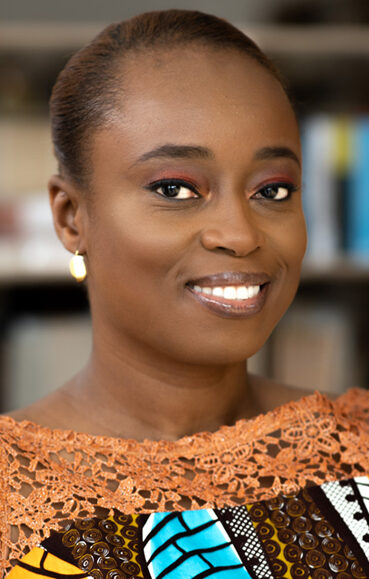 “He was born in 1961 in southwestern Nigeria and began his career at the National Concord newspaper in Lagos. Eventually, after he became concerned that the paper’s owner was using it to advance personal political ambitions, he left.
“He was born in 1961 in southwestern Nigeria and began his career at the National Concord newspaper in Lagos. Eventually, after he became concerned that the paper’s owner was using it to advance personal political ambitions, he left.
“A few years later, Olojede moved to America for graduate studies at Columbia, then worked for New York’s Newsday, where his reports on the aftermath of the 1994 genocide in Rwanda won the 2005 Pulitzer Prize. After a twenty-year career that spanned eighty-five countries across three continents, he returned to his home country to set up NEXT. ‘We have a country that can do much better than it is,‘ Olojede wrote in a 2009 Financial Times column. ‘We have a democracy that is struggling to move from form to function. And we have a press that has seen much better days and often makes itself available to the highest bidder.’ . . .
“Within months of its launch, NEXT’s Sunday broadsheet became a favorite of the Nigerian middle class, the diplomatic community, and expatriates. Not least because it contained credible information, not just invention or self-serving conversations between elites. Weeks after our website’s launch, several news organizations carried out revamps of their own sites, making them more modern and user-friendly. Similar transformations happened with their print editions, in obvious attempts to copy NEXT’s unique layout and design.
“We showed Nigerians that it was possible to read an item in a local newspaper, no matter how outlandish, and trust it wholeheartedly. . . .
The Aurora Prizes produced this minute-long video on Dele Olojede (Credit: YouTube)
“On my last day at NEXT, I requested a private meeting with Olojede. What exactly had gone wrong? In a lengthy conversation, during which I took notes, he told me that the business side of the company had suffered from myriad startup errors. ‘But our biggest miscalculation was the high premium you pay for honesty in this environment,’ he added.
“The media descended on Olojede after NEXT flopped. His lack of success seemed to be a validation for their inadequacies. Column inches were dedicated to celebrating his downfall and scorning his alleged belief that Nigeria could be like America. They referred to his grand vision with words like ‘hubris’ and ‘arrogant.’ More inches aimed to show how similar he was to the government officials whom his newspaper had criticized. . . .
“ ‘Let the people know the facts and the country will be safe,’ Abraham Lincoln said. That might be true in his United States, but we at NEXT soon realized that arming the Nigerian public with information did not necessarily mean they would do anything with it.’ ‘Occasionally, they might,’ Olojede told me. ‘Most of the time, they won’t.’ But, he felt, ‘dissemination of information is an end in itself, whether people use the information or not.’
“When our journalists latched onto a story and just wouldn’t let go, the Nigerian public often accused us of having an ax to grind, of witch-hunting and meanness. They rumored that we were being sponsored by the CIA, or ‘the Americans,’ and had turned Western allies in the grand plot to paint our country blacker.
“ ‘What did Olojede say to you people that kept you all so committed?’ a friend once asked me. ‘What kept you people working under such tough conditions?’
“Olojede simply talked to us about what he believed. He showed us mental pictures of what we could achieve. Before we were employed, after we resumed, throughout the challenging times, he told us that things could change in Nigeria and that we could be part of that change. I believed him.”
Short Takes
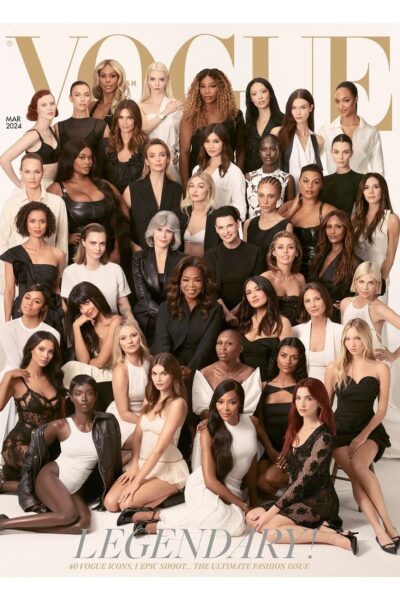
- “When Edward Enninful became editor in chief of British Vogue in August 2017, he made history as the first man and the first Black person to lead the century-old glossy publication,” Robin Givhan wrote Thursday for The Washington Post. . . . Enninful ends his time at the magazine with the March issue . . . His final cover image — a group photograph that is a feat of logistics and synergy — looks back at Enninful’s accomplishments, but it also challenges the industry to keep moving forward and aiming for full inclusion, not just on the runways and in advertising, but in retail, design studios and on corporate boards. . . .” The cover features “a sisterhood of 40 megastars [who] gather for a once-in-a-lifetime Steven Meisel fashion shoot, styled by Edward Enninful,” British Vogue said.
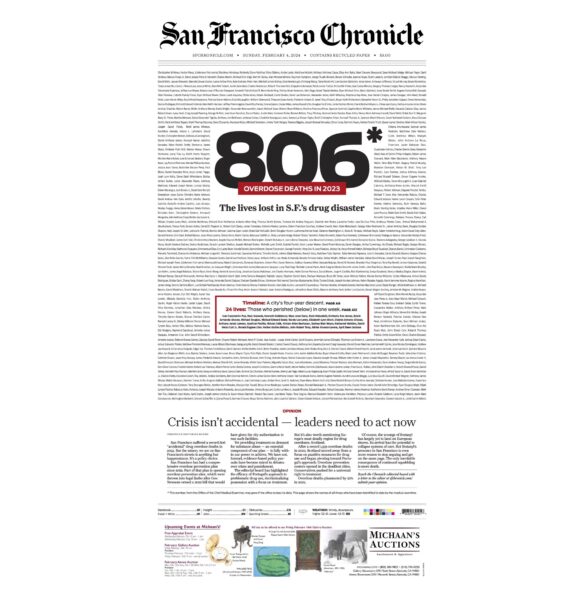
- “We devote our Sunday A1 to those who died from accidental drug overdoses in the city in 2023, a record number that will likely grow in the coming weeks as this crisis continues unabated,” Emilio Garcia-Ruiz, editor in chief of the San Francisco Chronicle, wrote Feb. 3 on X.
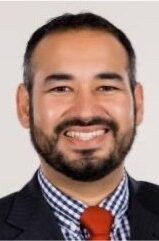 Jaime Cardenas (pictured), a Nashville-based “social media, SEO, sports, PR and digital analyst strategist” who has worked for Hearst and Gannett, was unanimously chosen Saturday by the board of the National Association of Hispanic Journalists as its vice president-digital. Cardenas succeeds Mc Nelly Torres, who resigned in January. “He has gone through the ups and downs of our industry like so many of our members,” NAHJ President Yvette Cabrera told the board, and represents a different area of the country in an organization where the east and west coasts are well-represented.
Jaime Cardenas (pictured), a Nashville-based “social media, SEO, sports, PR and digital analyst strategist” who has worked for Hearst and Gannett, was unanimously chosen Saturday by the board of the National Association of Hispanic Journalists as its vice president-digital. Cardenas succeeds Mc Nelly Torres, who resigned in January. “He has gone through the ups and downs of our industry like so many of our members,” NAHJ President Yvette Cabrera told the board, and represents a different area of the country in an organization where the east and west coasts are well-represented.
- “Student journalists in Iowa will now have more chances to hone their reporting skills while strengthening local news,” Hanaa’ Tameez reported Jan. 30 for Nieman Lab. “The Daily Iowan, the University of Iowa’s independent student newspaper, has purchased two weekly local newspapers in the state, per an announcement on Monday. Media company Woodward Communications sold the Mount Vernon-Lisbon Sun and Solon Economist to the Daily Iowan in Iowa City. The papers will keep their respective staffs and operate from their current offices. . . .”
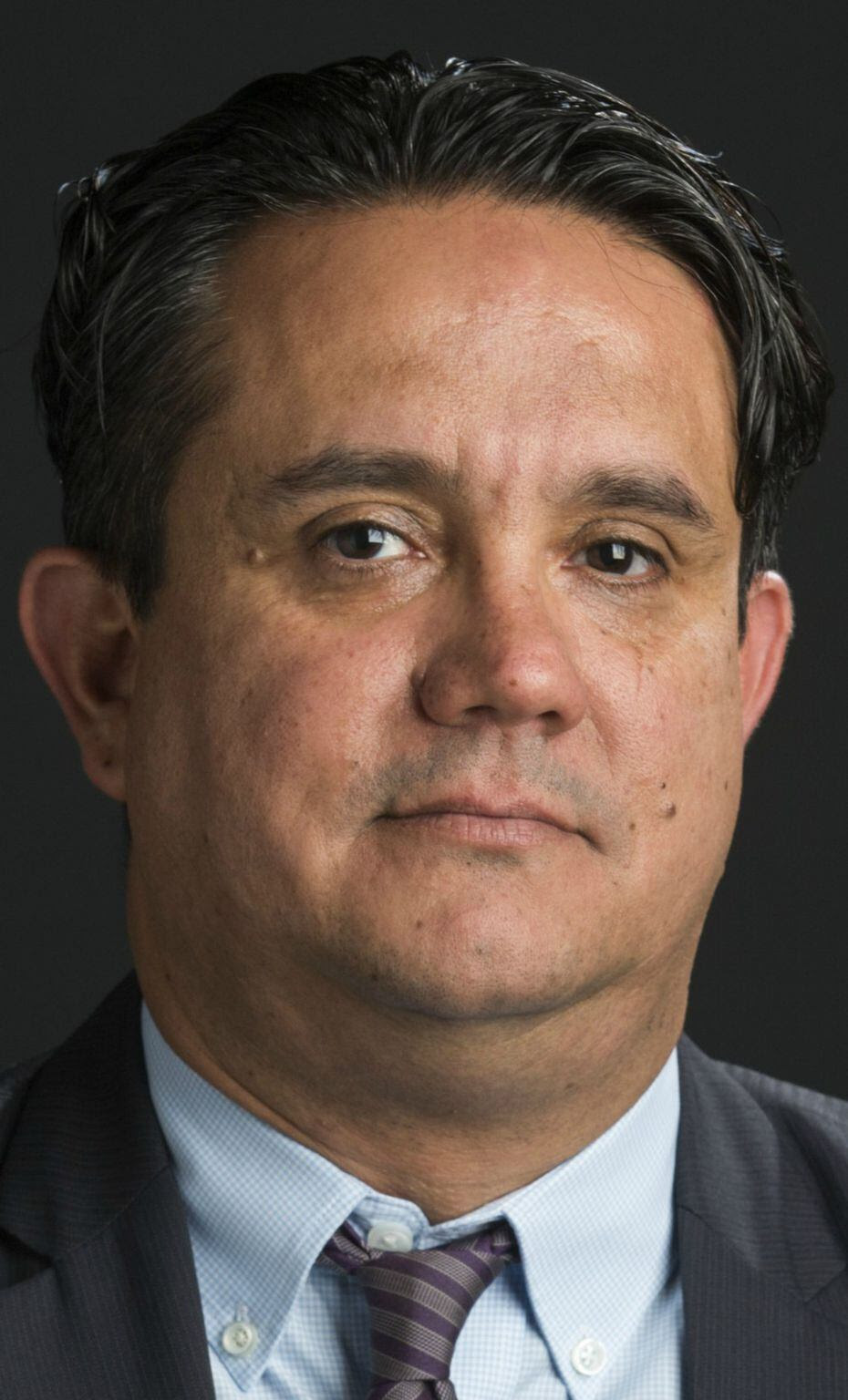 Alfredo Carbajal (pictured), who “worked at the Dallas Morning News for more than two decades in several senior editor roles, including as the Managing Editor of Al Día — a Spanish language outlet that serves the region,” is joining NPR as “lead editor for immigration coverage, and will work across various topic teams on the National Desk, collaborating with member station journalists and NPR staff,” the network announced Thursday. “Alfredo will also help manage news coverage from the Western United States.” Carbajal has also been president of the American Society of News Editors. Carbajal left Al Dia in March 2023 after the DallasNews Corporation said it would reassign the Al Día Dallas reporting staff to teams on the Dallas Morning News, stoking complaints and concern.
Alfredo Carbajal (pictured), who “worked at the Dallas Morning News for more than two decades in several senior editor roles, including as the Managing Editor of Al Día — a Spanish language outlet that serves the region,” is joining NPR as “lead editor for immigration coverage, and will work across various topic teams on the National Desk, collaborating with member station journalists and NPR staff,” the network announced Thursday. “Alfredo will also help manage news coverage from the Western United States.” Carbajal has also been president of the American Society of News Editors. Carbajal left Al Dia in March 2023 after the DallasNews Corporation said it would reassign the Al Día Dallas reporting staff to teams on the Dallas Morning News, stoking complaints and concern.
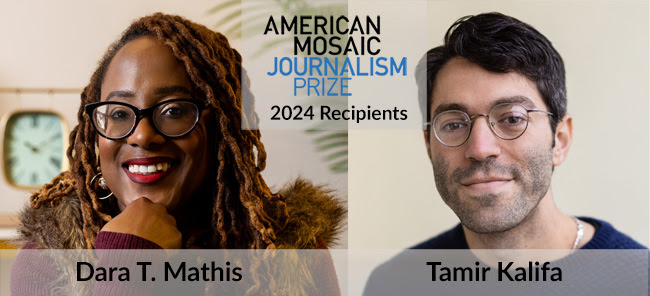
- Dara T. Mathis, a writer and journalist whose work examines parenthood, identity, and linkages to Black memory, and Tamir Kalifa, a freelance photojournalist who has documented communities affected by gun violence, the U.S.-Mexico border, civil unrest, environmental issues and political campaigns, have won the 2024 American Mosaic Journalism Prize, the Heising-Simons Foundation announced Tuesday. The prize “consists of an unrestricted cash prize of $100,000 per recipient — making it one of the largest dollar amounts given for a journalism prize in the United States — and is awarded to freelance journalists for excellence in long-form, narrative, or deep reporting about underrepresented and/or misrepresented groups in the American landscape. . . .”
- The Sports Journalism Institute will train its largest class ever this summer, the group announced Jan. 31. “Eighteen students—10 men and eight women—will make up the class of 2024. The class will include eight seniors, nine juniors and one sophomore. The previous record high for a SJI class was 17, which has happened twice (2021 and 2023). SJI was created in 1992 to help prepare women and minorities for summer internships. . . . SJI will also welcome three new hosts this year: The Raleigh News & Observer, the Providence Journal, Naples Daily News/News-Press, and the Arizona Republic.”
- McDonald’s has defeated a lawsuit from Byron Allen’s Allen Media Group “accusing the fast food giant of lying when it pledged to increase national ad spending with Black-owned outlets to boost sales and avoid high-profile legal action over alleged racial discrimination near the height of the Black Lives Matter movement,” Winston Cho reported Monday for the Hollywood Reporter. “A Los Angeles judge on Sunday dismissed the suit, finding that McDonald’s will likely win the case if it’s allowed to proceed since the company still has more time to live up to its vow. . . .”
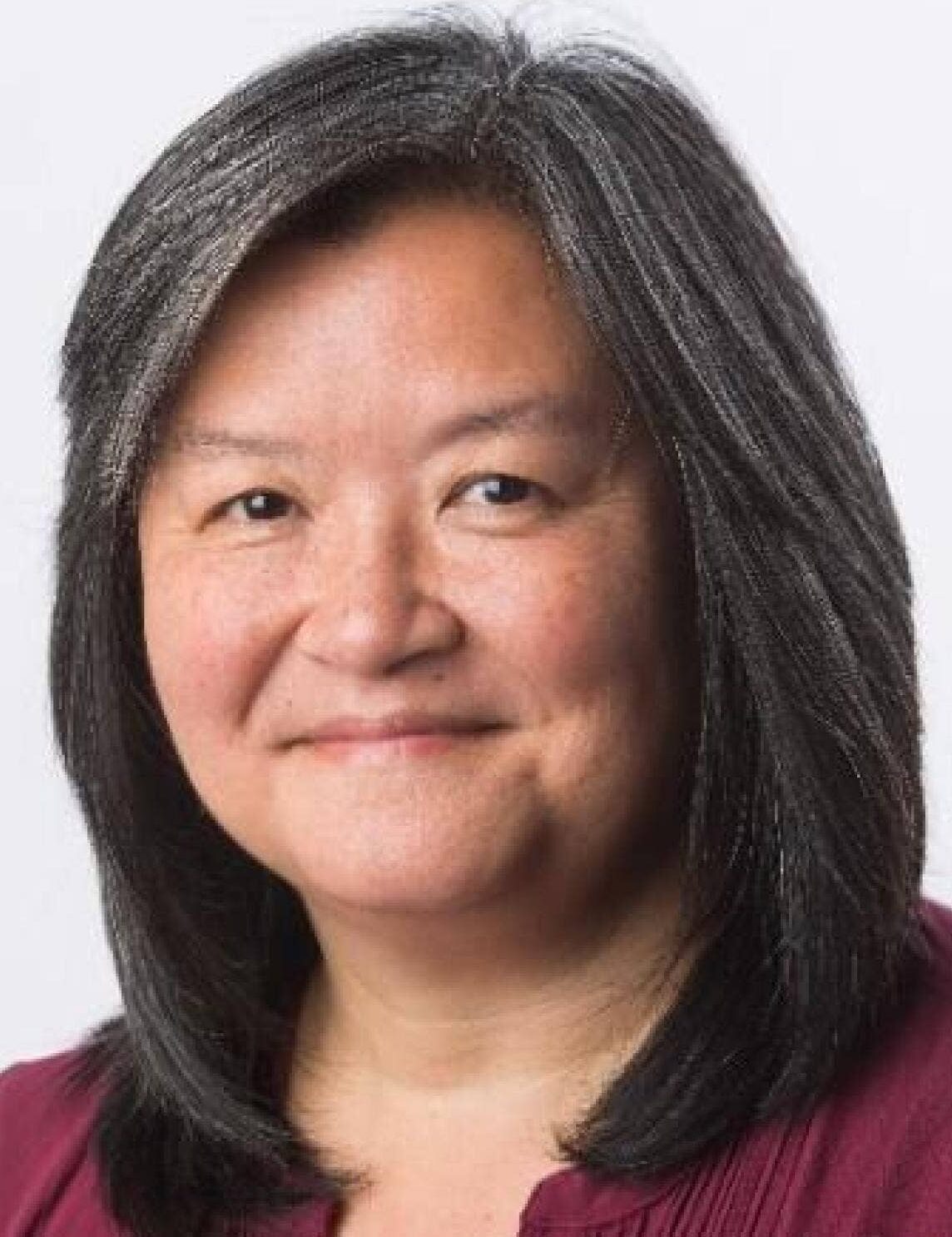 “Vivian Toy (pictured) is being promoted to senior editor, leading Culture and Cars,” The New York Times announced to staff members Thursday. “In this new role, Vivian will significantly expand her portfolio, bringing her formidable journalistic and leadership skills to the fore. She will lead the team responsible for hiring, training and finding new opportunities for internal newsroom and Opinion employees. In addition, she will serve as the main newsroom leader overseeing our systems for performance and compensation. And she will continue to serve as an adviser to leadership and to many of you around the room. . . .”
“Vivian Toy (pictured) is being promoted to senior editor, leading Culture and Cars,” The New York Times announced to staff members Thursday. “In this new role, Vivian will significantly expand her portfolio, bringing her formidable journalistic and leadership skills to the fore. She will lead the team responsible for hiring, training and finding new opportunities for internal newsroom and Opinion employees. In addition, she will serve as the main newsroom leader overseeing our systems for performance and compensation. And she will continue to serve as an adviser to leadership and to many of you around the room. . . .”
- The Radio Television Digital News Association Wednesday announced its class of 2024 First Amendment Award honorees, recognizing 13 people and organizations “for their efforts to promote responsible journalism and preserve the constitutionally guaranteed rights to do so.” The 13 are Gio Benitez, ABC News; Lauren Chooljian, New Hampshire Public Radio; Ingrid Ciprián-Matthews, CBS News; Evan Gershkovich, Wall Street Journal; Dylan Lyons, Spectrum News 13; Joan and Eric Meyer, Marion County (Kan.) Record; ProPublica; Rep. Jamie Raskin, D-Md.; Jesse Walden, Spectrum News 13; Clarissa Ward, CNN; Kristen Welker, NBC News; and Phil Williams, WVTF-TV, Nashville.
- Mary Wood, who teaches AP English Language and Composition classroom in Chapin, S.C., is again teaching Ta-Nehisi Coates’s “Between the World and Me,” “a memoir that dissects what it means to be Black in America — and which drew calls for Wood’s firing when she tried to teach it last year in her mostly White, conservative town,” Hannah Natanson reported Feb. 1 for The Washington Post. “As school policy demanded, she had gained permission to teach ‘Between the World and Me’ from Chapin High School’s new principal, a Black man. She had given every student’s parents a chance to review her curriculum. She had offered to opt out any child whose family disliked Coates’s book. And she had assigned a conservative voice pushing back on Coates. Her revised version of the lesson, Wood believed, complied with both the letter and the spirit of South Carolina’s proviso. So now, despite everything, she was trying again. . . .”
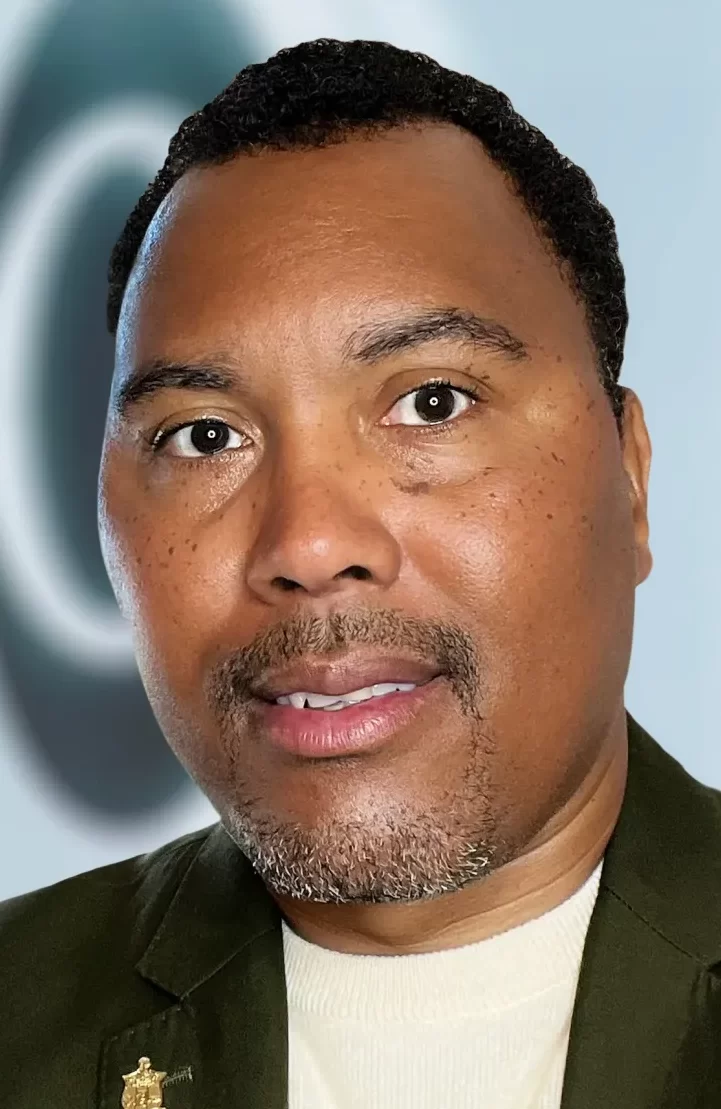 “CBS News has tapped Alturo Rhymes (pictured) in the newly created position of executive producer of daily news, while correspondent Jim Axelrod will be leading a new Eye on America unit,” Ted Johnson reported Tuesday for Deadline. “Rhymes will be responsible for ‘centralizing our daily Newsgathering offerings to the broadcasts, stream and digital so that we are positioned to aggressively advance stories in the news each day and ensure our best reporting flows seamlessly to all shows and platforms,’ according to a note to staffers sent by CBS News President Ingrid Ciprián-Matthews. . . . “
“CBS News has tapped Alturo Rhymes (pictured) in the newly created position of executive producer of daily news, while correspondent Jim Axelrod will be leading a new Eye on America unit,” Ted Johnson reported Tuesday for Deadline. “Rhymes will be responsible for ‘centralizing our daily Newsgathering offerings to the broadcasts, stream and digital so that we are positioned to aggressively advance stories in the news each day and ensure our best reporting flows seamlessly to all shows and platforms,’ according to a note to staffers sent by CBS News President Ingrid Ciprián-Matthews. . . . “
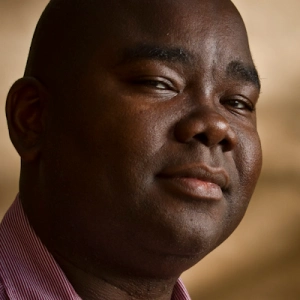 “I have depression, and this is my coming-out story,” Jerry McCormick (pictured) wrote Feb. 2 for the San Diego Union-Tribune. “My diagnosis started after I left San Diego and moved to Portland, Oregon. I had taken a management job at a TV station there, and within weeks, I knew I had made a critical mistake. After a few months on the job, I noticed my health began to decline, and I was tired and sleepy all the time. My mind began to travel to dark places, and one day, I thought that maybe I should end it all, but how? At that moment, a friend called me, and we began to talk, and I confessed to him how I was feeling. He said, ‘Have you considered going to a therapist or psychiatrist?’ That call saved my life. . . . According to the National Alliance on Mental Health, suicide is the third leading cause of death for Black or African American men ages 15 to 24. . . .Fear and shame keep people silent. I was one of those people, but no more. . . . I have depression, and I’m not ashamed of it. I hope you won’t be either.”
“I have depression, and this is my coming-out story,” Jerry McCormick (pictured) wrote Feb. 2 for the San Diego Union-Tribune. “My diagnosis started after I left San Diego and moved to Portland, Oregon. I had taken a management job at a TV station there, and within weeks, I knew I had made a critical mistake. After a few months on the job, I noticed my health began to decline, and I was tired and sleepy all the time. My mind began to travel to dark places, and one day, I thought that maybe I should end it all, but how? At that moment, a friend called me, and we began to talk, and I confessed to him how I was feeling. He said, ‘Have you considered going to a therapist or psychiatrist?’ That call saved my life. . . . According to the National Alliance on Mental Health, suicide is the third leading cause of death for Black or African American men ages 15 to 24. . . .Fear and shame keep people silent. I was one of those people, but no more. . . . I have depression, and I’m not ashamed of it. I hope you won’t be either.”
- “The intensification of harassment against journalists, possible legal reforms to criminalize journalism and the increase in self-censorship are some factors that some journalists from El Salvador and international press freedom organizations see as possibilities for journalists after the re-election of Nayib Bukele in the Feb. 4 presidential elections,” César López Linares reported Friday for LatAm Journalism Review.
- “Executives at two of Kenya’s largest media houses are considering legal challenges to what they believe is a politically-charged move to centralize government advertising,” Martin K.N Siele wrote Tuesday for Semafor. “The executives at Nation Media Group (NMG) and Mediamax fear the move by President William Ruto’s administration could starve them of much-needed revenues and boost a more sympathetic rival, sources close to the discussions have told Semafor Africa. . . .”
- Senegal is “in the midst of its worst political upheaval in decades after President Macky Sall postponed this month’s election,” Nermeen Shaikh said Thursday on “Democracy Now.” “ Attacks against the press that have occurred over the last three years are very symbolic of the repression against independent voices in Senegal, said Ousmane Diallo, senior researcher for Senegal and the Sahel at the Amnesty International office for West and Central Africa. “So, just on this Tuesday, the broadcasting license of the TV station Walfadjri was withdrawn by the minister of telecommunications, who criticized them for covering the protest on Sunday. And this is a very symbolic attack because Walf TV is one of the first TV media — private media houses in Senegal. And we know that private media houses, such as Walf, Walfadjri, and Sud FM, have been key in opening up the democratic voices and paving the way to political change in 2000 and 2012. And beyond that, I think what have been very hurtful toward Senegalese peoples and their rights have been the recurrent suspension of internet access via mobile data. . . .”
To subscribe at no cost, please send an email to journal-isms+subscribe@groups.io and say who you are.
Facebook users: “Like” “Richard Prince’s Journal-isms” on Facebook.
Follow Richard Prince on Twitter @princeeditor
Richard Prince’s Journal-isms originates from Washington. It began in print before most of us knew what the internet was, and it would like to be referred to as a “column.” Any views expressed in the column are those of the person or organization quoted and not those of any other entity. Send tips, comments and concerns to Richard Prince at journal-isms+owner@
View previous columns (after Feb. 13, 2016).
View previous columns (before Feb. 13, 2016)
- Diversity’s Greatest Hits, 2018 (Jan. 4, 2019)
- Book Notes: Is Taking a Knee Really All That? (Dec. 20, 2018)
- Book Notes: Challenging ’45’ and Proudly Telling the Story (Dec. 18, 2018)
- Book Notes: Get Down With the Legends! (Dec. 11, 2018)
- Journalist Richard Prince w/Joe Madison (Sirius XM, April 18, 2018) (podcast)
- Richard Prince (journalist) (Wikipedia entry)
- February 2018 Podcast: Richard “Dick” Prince on the need for newsroom diversity (Gabriel Greschler, Student Press Law Center, Feb. 26, 2018)
- Diversity’s Greatest Hits, 2017 — Where Will They Take Us in the Year Ahead?
- Book Notes: Best Sellers, Uncovered Treasures, Overlooked History (Dec. 19, 2017)
- An advocate for diversity in the media is still pressing for representation, (Courtland Milloy, Washington Post, Nov. 28, 2017)
- Morgan Global Journalism Review: Journal-isms Journeys On (Aug. 31, 2017)
- Diversity’s Greatest Hits, 2016
- Book Notes: 16 Writers Dish About ‘Chelle,’ the First Lady
- Book Notes: From Coretta to Barack, and in Search of the Godfather
- Journal-isms’ Richard Prince Wants Your Ideas (FishbowlDC, Feb. 26, 2016)
- “JOURNAL-ISMS” IS LATEST TO BEAR BRUNT OF INDUSTRY’S ECONOMIC WOES (Feb. 19, 2016)
- Richard Prince with Charlayne Hunter-Gault, “PBS NewsHour,” “What stagnant diversity means for America’s newsrooms” (Dec. 15, 2015)
- Book Notes: Journalists Follow Their Passions
- Book Notes: Journalists Who Rocked Their World
- Book Notes: Hands Up! Read This!
- Book Notes: New Cosby Bio Looks Like a Best-Seller
- Journo-diversity advocate turns attention to Ezra Klein project (Erik Wemple, Washington Post, March 5, 2014)

